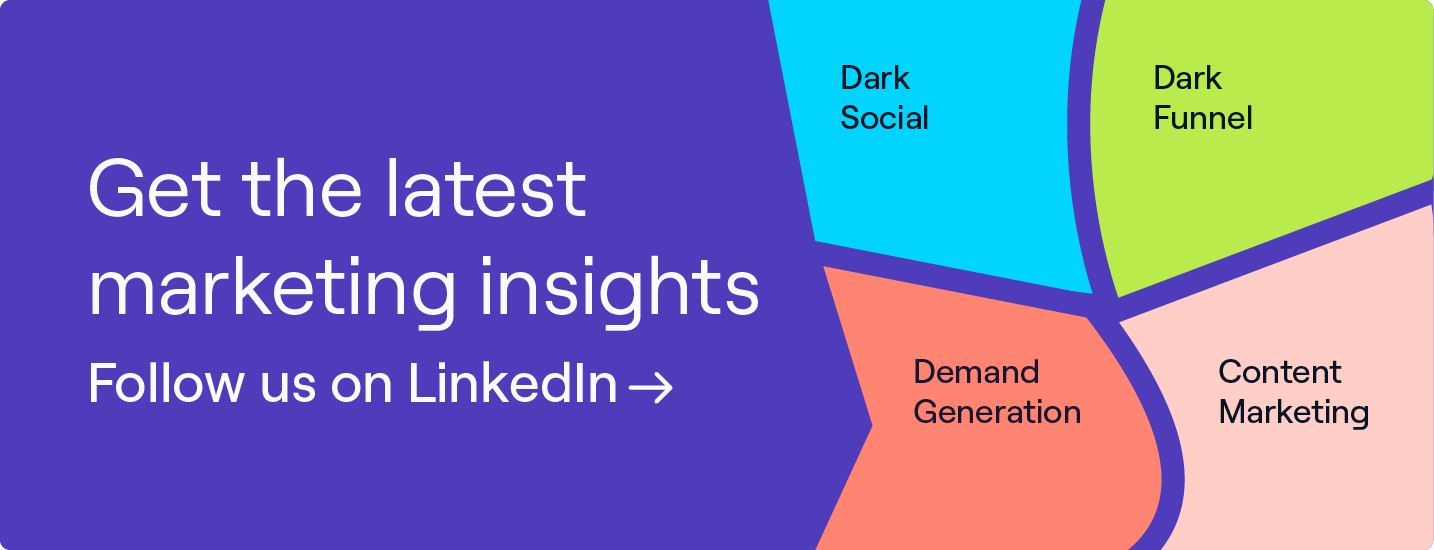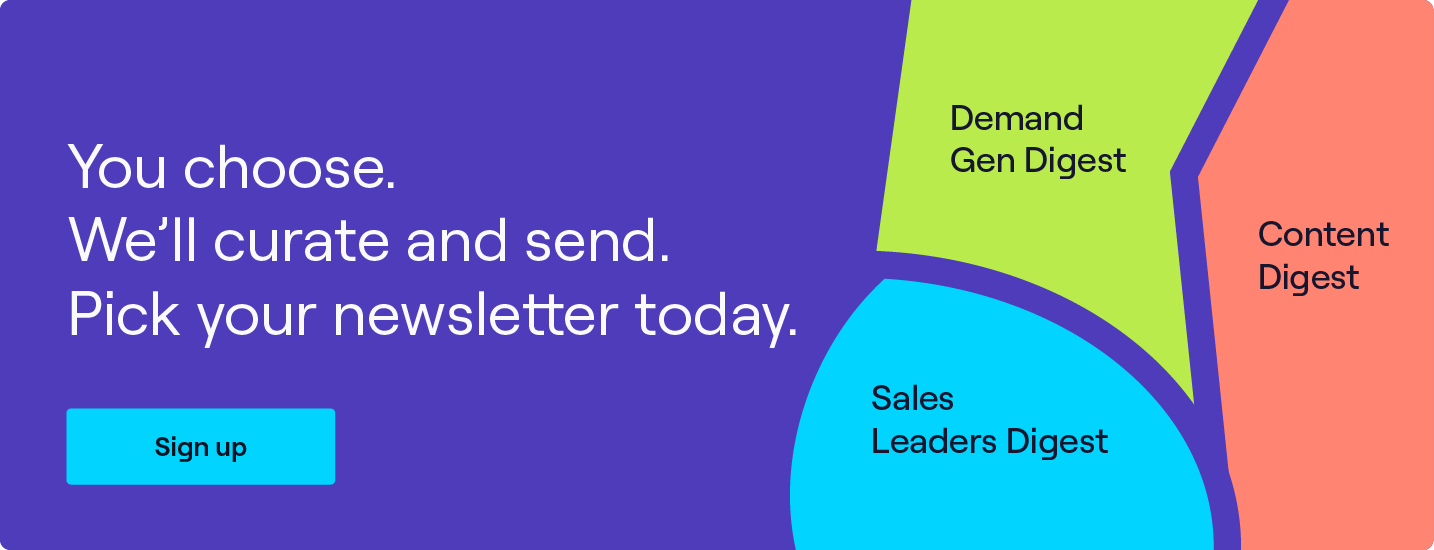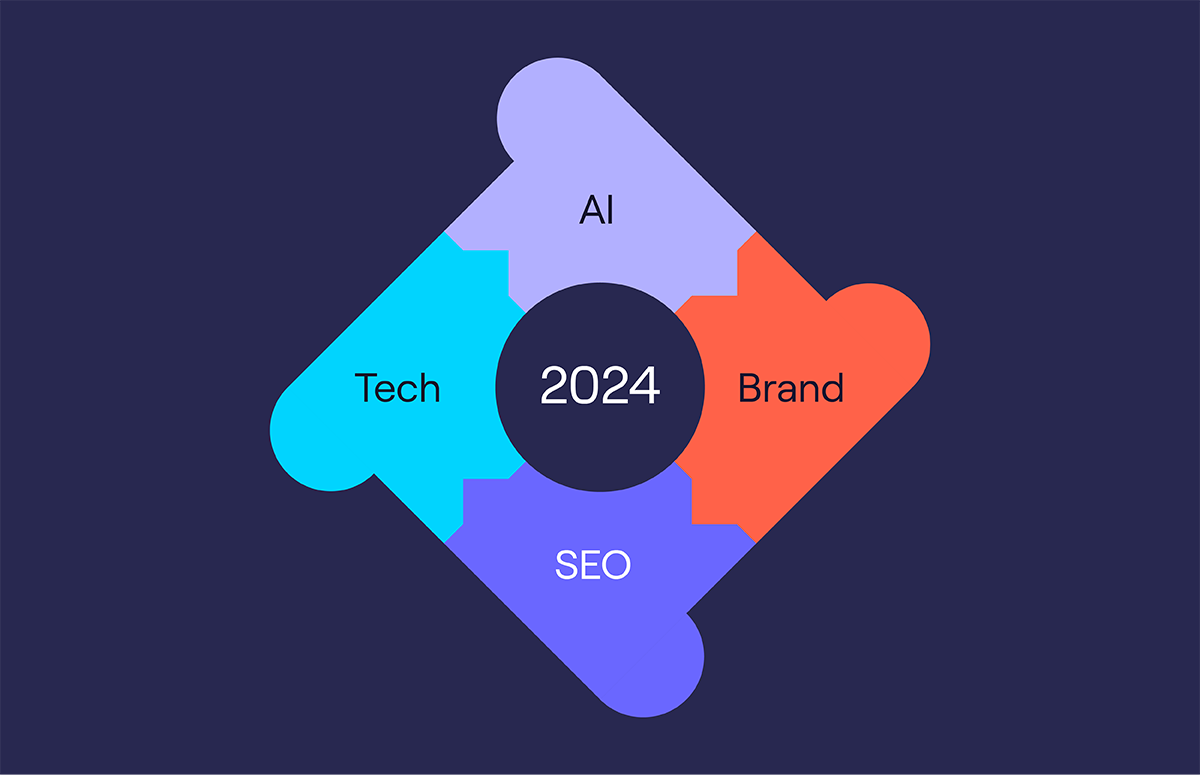Brand Vs Demand
What's on this page:
B2B marketers, what's more important:
Building your brand or focusing on demand generation?
Your answer might differ from others in the B2B sphere depending on where you are in your marketing journey.
But one thing’s for sure:
Both matter.
So the question isn't really which one, but how, when and why...
In this article, we spoke to a number of B2B marketing leaders to discover why creating brand awareness and building targeted demand generation campaigns are important, and how you can align them for the best success.
Click one of the topics below to jump to a section or scroll 👇 to start reading.
Why brand?
The way your brand is perceived has a significant impact on your incoming revenue - no matter the type of marketing you're doing.
Think about it:
A brand that has a huge marketing budget but doesn't respond to bad reviews, customer complaints and has limited or no interaction on social will likely attract fewer customers than those that do.
What's more, if your buyers don't know who you are or what you do, you'll have a hard time getting them to invest in what you're selling.
Rishika Patel, Business Development and PR Executive at Writecream, says:
“It is important to have a brand awareness campaign to make your company stand out. Your marketing should be about telling the story of your brand and how it can solve a problem and should also educate your audience while making them aware of your brand.”
Creating strong brand awareness campaigns and encouraging positive brand sentiment online can improve customer relationships and loyalty.
Important brand elements include a professional logo (you can use a logo maker tool or run a logo design contest), brand slogan, and more.
The benefits of building up your brand don't stop there, though.
A strong brand can increase employee retention, increase your company value and ensure your customers don't move on to competitors.
Adam Hempenstall, CEO and founder of Better Proposals, says it best:
“If you and your competitors have similar features and pricing, then you need to focus more on brand marketing to make yourself stand out in a crowded market.”
But where to start?
Being more brand-focused might not seem like it, but it's a big strategic move for your marketing.
It takes effort and a lot of time, time many companies don't feel they have to spare, especially to focus on something they feel won’t bring in leads short term.
But here's why you should:
When you invest in your brand, you're showing your buyers why you're different to your competition. You’re adding value to their day-to-day lives and building relationships.
Relationships that could take years longer to develop without your keen online involvement.
Jamie Irwin, Marketing Executive at Service Club, offers some great advice here:
“If you can create content that answers the questions your target audience is asking, then they will remember you for being a helpful brand that once contributed value to them.”
“Contribute value, become a helpful brand, and your audience will remember you.”
So, whether you're an enterprise or a startup, always set aside some budget for brand awareness.
Plus, it’s a good tactic for long-term value.
Noah Kain, owner of Noah Kain Consulting, adds:
“Consumers need to become familiar with your brand, and they also need to find your brand. Being able to find your brand, especially when doing a Google search, is an often overlooked item for many brands.”
To start your brand awareness campaign, think about your brand values and how you want to resonate with your audience.
Once you know what your company stands for, you’ll naturally reach a wider audience through referrals, word of mouth, content shares and dark social.
But this kind of success doesn’t come from pushing your product on your buyers.
You need to offer them valuable content they can realistically use to solve pain points and grow their own business.
This can be anything from blogs, templates, whitepapers, podcasts and videos.
Why demand?
Unlike brand awareness campaigns, demand generation is a short-term play with significant results.
Michael Alexis, CEO of TeamBuilding, advises small and medium-sized businesses to focus at least 80% of your marketing efforts on demand generation:
“The reason for this approach is simple: if you have a reliable number of leads coming in each day and week, then everything else can fall into place over time. Sales strategy not perfect? No problem! You will have more leads the next day.”
“In contrast, a business with an amazing brand presence but no leads will struggle to sustain itself. Once you reach a certain size, the cumulative efforts of demand generation give you the privilege to focus more on brand.”
And, it makes sense:
As B2B marketers, we want to get our product in front of as many eyes as possible, and demand generation allows us to do this. The best part is the more budget you have, the better your results.
Tim Absalikov, Co-founder and CEO of Lasting Trend, adds:
“90% of the shopping journey is completed before most buyers start thinking about brands. Marketing tactics for generating demand depend on your company size, goals, products, services, and customers. They will be different for each organisation. The only thing they have in common is their intention to increase brand awareness and nudge potential customers toward conversions.”
“However, before starting any work, you should focus on three main components: the product itself, the target audience and the unique selling proposition. It is impossible to launch effective campaigns without identified target audience segments and well-developed product benefits.”
“Plus, you always need to remember that the product must solve a specific user problem.”
But where to start?
Start by focusing on demand generation campaigns that bring leads into your B2B sales funnel.
Data driven marketing is essential here because it will help you target the right people at the best time with messaging that resonates with them.
Then you'll start to find that through demand gen tactics, you shape how your buyers see you. The more you engage with them throughout their journey through the funnel, the better your relationship will become.
Once you’ve established a successful demand generation strategy, you can focus more on building better brand awareness.
Balancing brand and demand
Yes, brand awareness is great.
Yes, demand generation is great.
But, on their own, these two marketing strategies might not give you the results you're looking for.
Charlie Riley, VP of Growth at Havoc Shield, says:
“It would be ideal to have a healthy appreciation for long-term brand building and gaining customers quickly through demand marketing.”
“Most consumers do their research during buying intent phases, so nailing down brand marketing with your demand efforts can help your demand generation.”
Bring them together...and you've got yourself a well-rounded strategy for success.
You see, if no one knows who your brand is, your demand generation isn't going to be as successful as it could be.
You need brand awareness for demand gen to work and vice versa.
Your brand establishes your legitimacy, creates loyal customer relationships and helps drive demand.
Kenneth Burke, VP of marketing at Text Request, expands on this a bit more:
“Demand gen is more about "Why buy one?" It involves education and highlighting pain points with urgency. Branding is more about "Why buy ours?" It involves building your reputation so that people choose you to solve that problem - even though there are probably many other options.”
“When companies over prioritise demand gen, they tend to get a lot of prospects interested in a solution but lose out to competitors during the due diligence process. When companies over-prioritise branding, they tend to build a good reputation but miss opportunities because buyers don't understand why they should work with your company.”
“It takes balance, and when you have the two both running strong, you create a flywheel that spins faster and faster.”
But where to start?
Getting the perfect balance of demand and brand really depends on where you are in your marketing journey.
Some businesses like to focus on lead generation through demand, and then once they have a steady pipeline, focus on building their brand.
Others choose to build their brand and then focus on generating demand.
We suggest finding a balance between both, especially if you're measuring your success on revenue rather than the number of leads entering your funnel.
Here’s a recap of this post where Kyle Lacy, SVP of Marketing at Lessonly, explained their approach to a demand gen/brand balance:
“We've divided our budget into two parts: demand and brand. About 70% of the budget goes toward paid ads, web, tech and other inbound lead gen efforts and supports the direct sourced revenue and pipeline creation. Around 30% goes to events, direct mail, sponsorships, employee engagement etc., and we didn't track it.”
“The result... Better creativity, more incoming revenue and a brand that can create an impact.”
There are two rules to follow here:
- Create a brand that your audience loves and remembers.
- Don't ever stop giving your audience value. Through your expertise and excellent marketing campaigns, you'll build relationships that showcase how your product really is better than your competitors, and you'll have a whole audience of fans to back you up on that.
To help catapult your marketing success, here are three top tips for striking a brand/demand balance:
1. Establish your values
Before you start marketing your brand, the most important thing is to write down your values and then stick to them!
There’s nothing worse than a brand that says one thing and then does another.
People notice when brands aren’t authentic, and in today’s society, it’s not about how famous your brand is, but who you are, what you support (and don’t support) and how you can greatly impact the people who follow you.
2. Stay consistent
If you want to stay in someone's mind, you need to make sure your tone, style, brand colours and choice of graphics and fonts stay consistent.
3. Get emotional
Forget selling. Align your brand values with your customer values for the most effective campaign messaging.
When you show you’re putting your customers and their needs first, you’ll create demand and drive revenue, as Chaenara O'Brien, Head of Strategy at Thought Bakery, reminds us:
“Marketing is growth - growth of an audience and subscriber base that ultimately helps you create an impressive presence in your chosen target market.”
“There’s a huge amount of merit in realising effective brand awareness campaigns can significantly contribute to top-of-the-funnel demand generation. Their "job" is to pull the right eyeballs to what really makes your product, people, and overall customer experience different. And if it’s done right can help you get more prospects in the 'acquisition door'.”
Brand vs demand: the last word
When you stop looking at brand strategy as something separate from your demand generation campaigns, you’ll notice a few positive changes:
- Your team will be more focused on creating an experience for their customers, unlocking their creativity which will attract more customers in turn.
- Your revenue generation will actually increase.
- Your customer experience will improve and your brand will grow!




